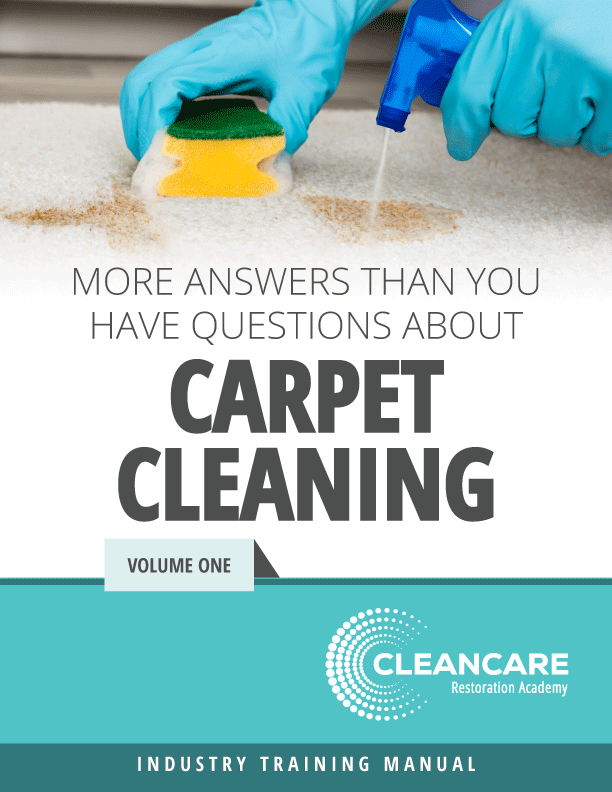Product Details
Updated October 2009
More Answers Than You Have Questions About Carpet Cleaning, Vol. 1, the Product - Carpet inspectors and experienced cleaners, this is the information you’ve been looking for!
For years, you’ve heard the ads from carpet manufacturers about how great all their fibers, pile designs, and manufacturing techniques are. For the most part they’re right. Carpet is a great floor covering. But perfect? Problem free? . .
And that’s the purpose of “Answers, 1.” It’s an analysis of fibers, yarns, backings, manufacturing options, styling, dyeing, finishing, even cushion; but it does it from a cleaner’s or inspector’s perspective.
Here’s a partial listing of what’s included: We’ll start by discussing what cleaners really clean, what inspectors really inspect - fibers. We’ll cover both natural and synthetic fibers (including triexta), along with characteristics of specific fibers, and how they compare with each other. When you finish this chapter, you’ll know all about olefin’s resiliency problems and crimp-loss in polyester and triexta, and how that affects the outcome of your job.
We’ll also discuss the realities of fiber wear and tear, what soil does to fibers over time. You’ll learn how to brief customers so they won’t call you back to reclean traffic lanes, when, in reality, all they’re seeing is shading. Inspectors will fully understand what causes all those “mat/crush” or “premature wear” complaints. Next, you’ll learn how fibers become yarns, with discussions on cotton, wool, and synthetic yarn spinning and heat setting. You’ll learn all about staple versus continuous filament yarns, and why some are more suitable for residential or commercial carpet and what future trends are. And because fibers and yarns are so important to the outcome of the cleaning job - indeed, to overall carpet performance - we’ll also cover 4 methods of fiber ID: visual, tactile, burn and chemical. Included is a complete fiber ID chart.
We’ll also discuss backing systems: what they’re made of, their evolution from natural to synthetic fibers, how they effect carpet performance. We’ll be sure to cover potential backing problems, such as shrinkage, browning, rippling, and delamination.
Of course, no discussion of carpet would be complete without covering basic manufacturing: woven, tufted, modular, and needle punched. We’ll follow up construction with styling options, including loop-pile, cut-pile, cut/loop, and combination designs.
We’ll discuss dyeing with its many variations including: definitions, coloring basics, dye types, and techniques. You’ll learn how the color gets in carpet at the mill, and how it comes out during use or cleaning, and also about metameric effects
Click "View additional details" link below to view complete remaining description.
Additional Details
Finally, there’s a chapter on finishing, which covers backing lamination, pile preparation, and inspection. As an added bonus, we even throw in a chapter on cushion: its purpose, how it’s evaluated, types, and how it affects the life of the carpet - even the result of the cleaning job.
After each chapter in Answers 1, we include a Comprehension Quiz. Use it to test your knowledge retention or to prepare for carpet cleaning certification courses. If you’re an owner or manager, you can use it for year-round company training, saving you thousands in program development. Simply read a chapter, present the material to your staff . . . and watch them fall asleep! That is, until you copy and pass out the quizzes. Next training meeting, everyone’s alert and taking notes! Amazing! Answers 1 is the first in a 2-part series. Part 1 covers the Product and Part 2 covers the Processing Procedures. Beginning cleaners usually purchase Answers 2 first. It’s not until they get blamed for fiber characteristics or manufacturing problems that they finally wake up and discover that they need much more on how carpet is made. Then they invest in Answers 1 - usually requesting overnight delivery!
